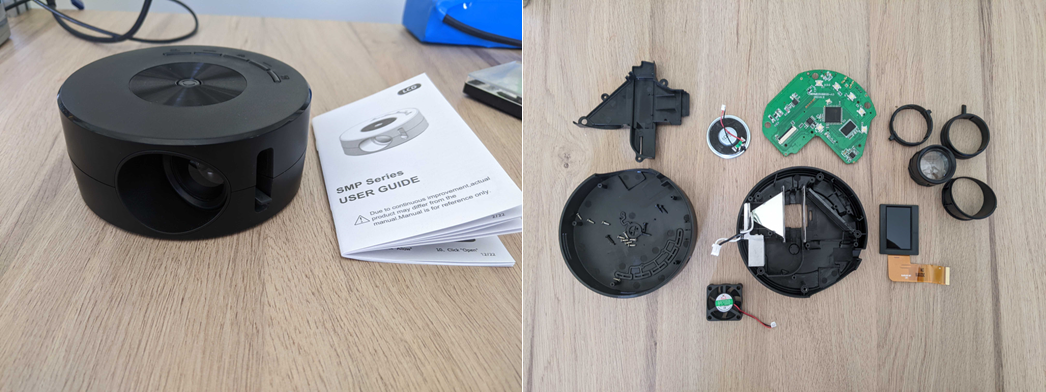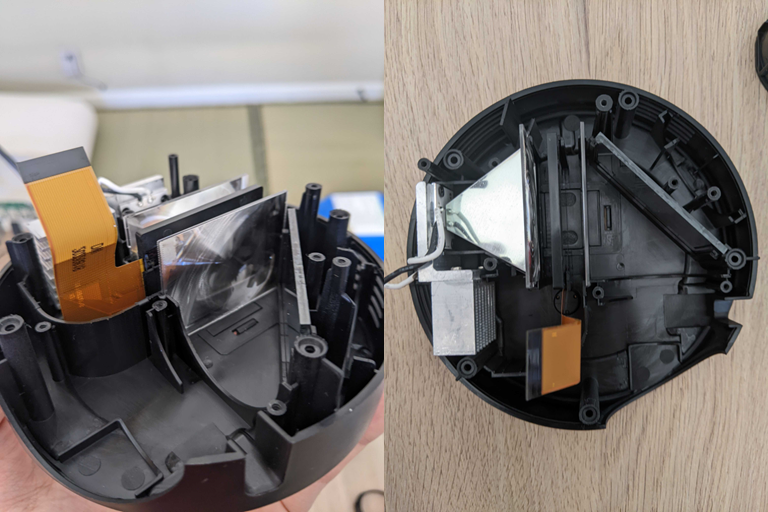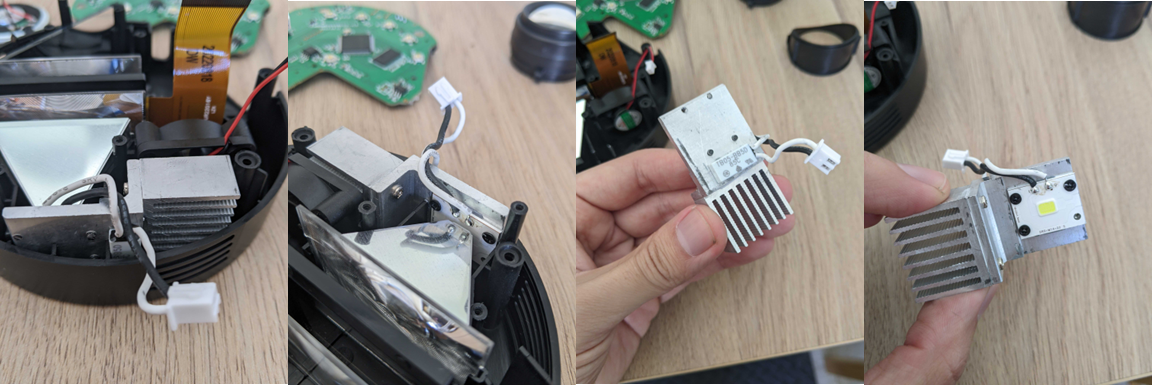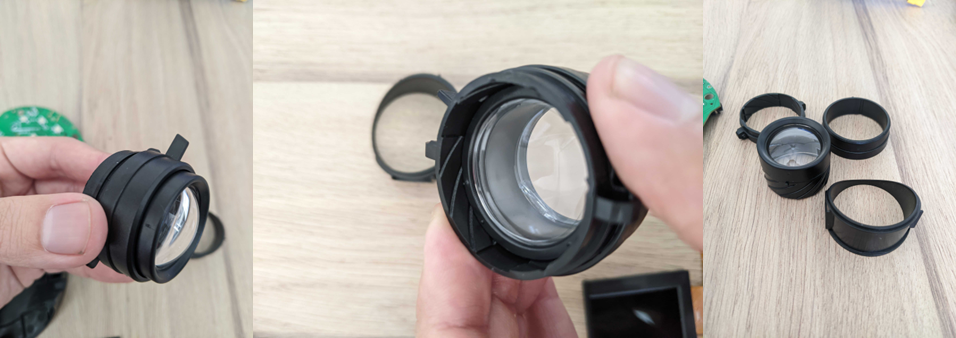Peer through this here lens,
See the change you can truly be.
Distortions enhanced

I should have known better, but a recent late night trip down the Aliexpress rabbit hole landed me on a few suggested pages for handheld mini/pico projectors, the YT200 in particular. This thing is shockingly tiny and only $30, so I made it one of my indulgent purchases for the primary intent of tearing it down. A cursory internet search returned nothing on the company/logos in the product description, and there didn't even seem to be any reviews for this thing beyond the smattering of remarks on the Aliexpress page. While it certainly is still most definitely a waste of $30, I was impressed by what it could deliver for that cost at its size. It certainly shows a recognizable image (on a clean wall, in the dark) while drawing less than 10W, and despite the lack of VGA/HDMI/DVI ports, it plays a reasonable range of media filetypes off of connected flash drives. I'm hopeful that this thing supports DisplayLink and can be connected to an RPi in a compact Retropie or projective mapping project, but even if it can't, it's a cute, easy-to-pack toy that can run off most handheld power banks.
As with a lot of off-brand projectors, the listed specifications are laughably misleading. The little guy produces a 180p (no, not missing a 0), low-brightness image. Ignore the advertised performance pictures or other claims. One of DIY Perks projects demonstrates how this type of projector works: A super-bright LED source (collimated by some fresnel lens) shines through an LCD panel, and then a simple stack of mirrors and lenses projects that image onto the screen. It's really the old school, overhead, transparency projectors getting re-packaged into as small of a container as possible. If you remember from school (and a shockingly increasing number of you won't), those overhead projectors didn't work all that great without the room already pitch black, but hey, for sub-200 USD projectors, the end result isn't all that terrible.

The YT200 is that same basic layout shrunk even further down. The construction is pretty cool. Most of the internal pieces are slotted in place, sandwiched by the two enclosure halves. The single electronics board is actually the only internal element thing bolted to the enclosure, and I'm a bit surprised they didn't just add some plastic stakes in to pin that down along with the other components, though maybe that's preferred to give more stability for when you plug and un-plug peripherals into and from the board.

The cooling on these models leave a bit to be desired and (apparently) is the primary source of noise for projectors in general. Some DC fan or blower is usually positioned to blow onto some set of heat fins connected to the light source, whether that's a high-power LED in this case or an actual bulb in others. For projectors like the YT200, the fans draw in air from the opposite side of the machine, across the LCD and fresnel lenses, requiring the intake to go through a tortuous path along the interior of the enclosure. It seems like a great way to pull in dust and contaminate the lens, as well as the already-warm air inside the box. The heat sink in this machine also wasn't much to write home about: it's thicc in all the ways we didn't need in this product. The temperature-threshold shut-off sensor is pretty nifty though, even if it's only sorta, kinda jammed against the heatsink and not actually secured in place.

I also really liked the focusing lens, if only because I associate lenses and focusing with precisely-fixtured, polished pieces of glass, and YT200 is yolo with some plastic lens mounted in an injection-molded spiral guide. There is just barely enough friction to ensure that the lens doesn't regularly move out of focus, though admittedly it's hard to tell given the stunning paucity of resolution in this device. These sort of use-cases in products have always interested me: you can seemingly get away with a highly unreliable mechanism when manual adjustment to an arbitrary metric (how sharp the image appears to the user) is accepted to be part of the initial setup (and subsequent re-setups).
Without being able to reliably track down the details for the electronics boards and sub-components, I'm not sure how I can hack these things beyond their actual, OG use cases, as limited as they may be. I keep hoping I can stumble across some gizmo that has excellent re-purposing potential in some other project, but so far, it's looking like I'm the one getting repeatedly played by the Aliexpress algorithm.